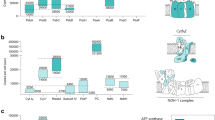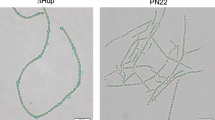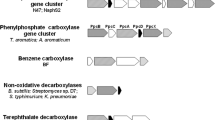Abstract
The hetR gene plays an important role in heterocyst development and pattern formation in heterocystous cyanobacteria. The hetR gene from Anabaena sp. PCC 7120 was overexpressed in Escherichia coli. Antibodies raised against the recombinant HetR protein (rHetR) were used to characterize metabolism of the HetR of Anabaena sp. PCC 7120 in vivo. HetR was present at a low level when Anabaena sp. PCC 7120 was grown in the presence of combined nitrogen. Shifting from nitrogen repletion conditions to nitrogen depletion conditions led to a two fold increase of HetR in total cell extracts, and most of HetR was located in heterocysts. The amount of HetR in total cellular extracts increased rapidly after shifting to nitrogen depletion conditions and reached a maximum level 3 h after the shift. Isoelectrofocusing electrophoresis revealed that the native HetR had a more acidic isoelectric point than did rHetR. After combined nitrogen was added to the nitrogen-depleted cultures, the degradation of HetR depended on culture conditions: before heterocysts were fully developed, HetR was rapidly degraded; after heterocysts were fully developed, HetR was degraded much more slowly. The distribution of HetR in other species of cyanobacteria was also studied.
Similar content being viewed by others
Author information
Authors and Affiliations
Additional information
Received: 24 June 1997 / Accepted: 5 December 1997
Rights and permissions
About this article
Cite this article
Zhou, R., Cao, Z. & Zhao, J. Characterization of HetR protein turnover in Anabaena sp. PCC 7120. Arch Microbiol 169, 417–426 (1998). https://doi.org/10.1007/s002030050592
Issue Date:
DOI: https://doi.org/10.1007/s002030050592




